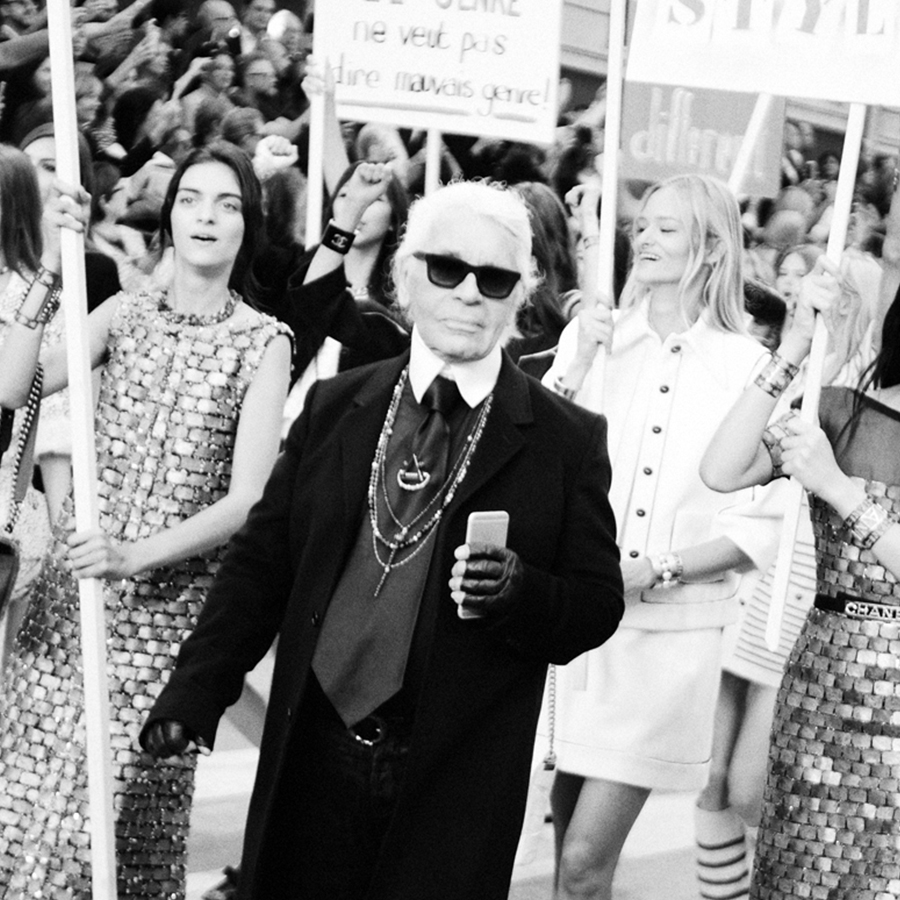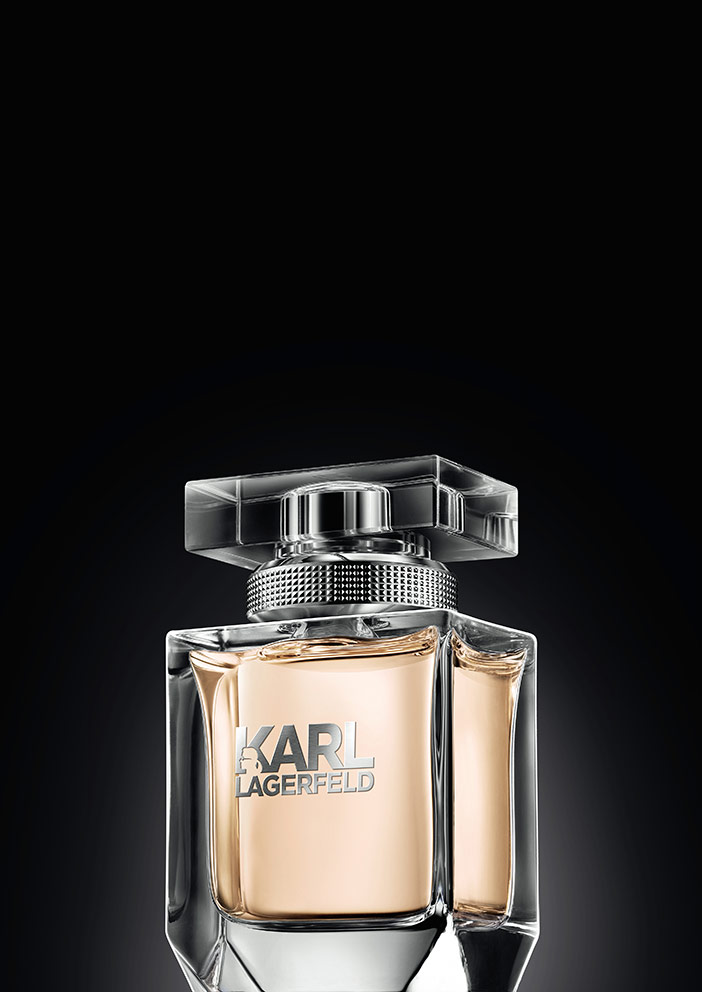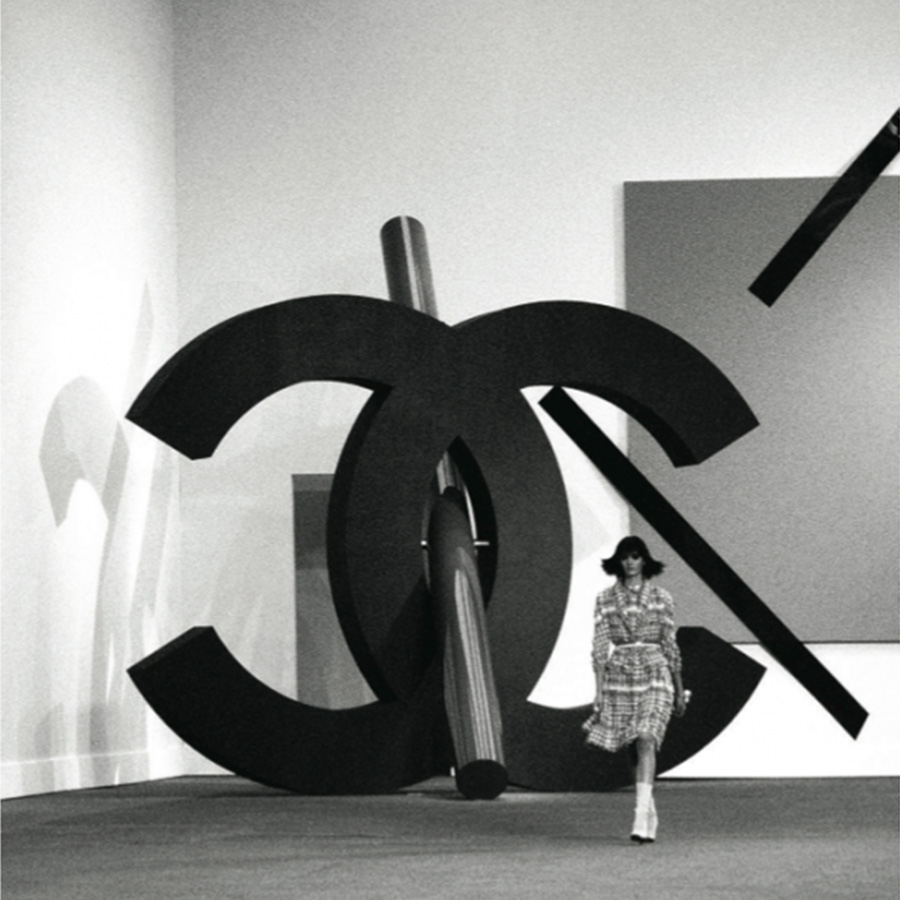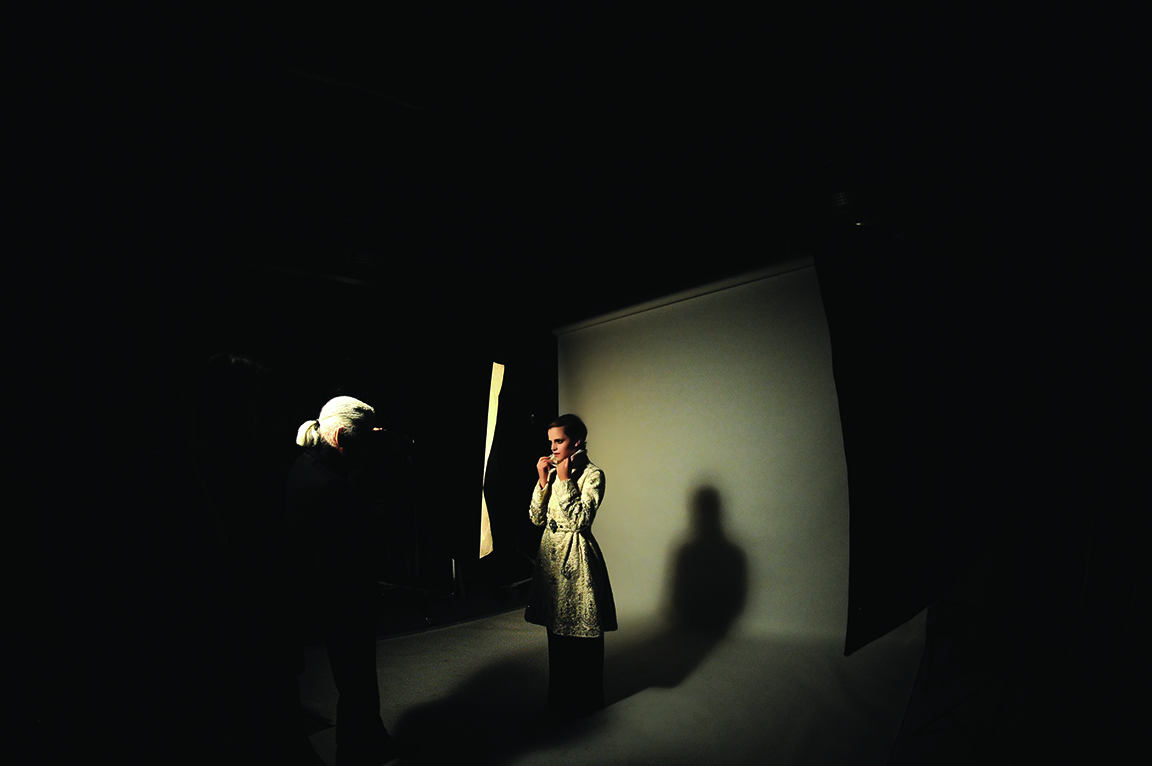
KARL LAGERFELD ON JAPAN
By Crash redaction
KARL LAGERFELD INTERVIEW ON JAPAN: AS IT UNVEILED THE LITTLE BLACK JACKET IN TOKYO, CHANEL TOOK ANOTHER STEP FORWARD IN ITS LONG AND INTIMATE RELATIONSHIP WITH THE LAND OF THE RISING SUN. IN AN EXTRACT FROM A PRESS RELEASE, KARL LAGERFELD TALKS ABOUT HIS PASSION AND ADMIRATION FOR THE RICH AND SOPHISTICATED CULTURE OF JAPAN: A WARM AND TIMELY HOMAGE TO A COUNTRY FULL OF COURAGE AND BEAUTY.
Interview by Armelle Leturcq
Have you seen Tokyo change since the last time?
Yes, there is a change in the last eight years. I think it’s a change for the better. I like it even better now than eight years ago. There is something changed in the city, but for the better.
Can you tell us more about your aesthetic link with Japanese architecture?
I love modern Japanese architecture. I like Tadao Ando; I think he is a genius, very gifted and very good. I also like the work of Junya Ishigami, a young Japanese architect.
Do you think that Japanese people are, in a way, very well educated in their eye to see the fashion?
Yes. Japanese fashion imposed a new aesthetic in fashion, a new way to look at things, an evolution.
I know you don’t really like speaking about the past so can we speak about the new book you made, this little Black Jacket book? How did you design it?
The thing I like the best in life are books and paper, and I also like fashion because it starts with a sketch and I am in fact more a sketcher. Books and paper are for me something magical. When I was a child I was always afraid that I would miss paper to sketch on. One day, I asked my father to bring me beautiful paper because I was running out of it. He said to me: “if you’re running out of paper, you can sketch on the other side”. And I said: “never ever in my life I will sketch on the other side of a piece of paper”. Paper is really the thing I like best. I couldn’t live without paper. The pleasure of reading a book is something no screen can give you. The book we just made called The Little Black Jacket: Chanel’s classic revisited by Karl Lagerfeld and Carine Roitfeld is not heavy at all. It’s a very simple paper; it’s in a box, in a slip box. This book is very flexible and the paper is printed in black ink. It’s – in terms of technique of printing – a masterpiece. I must say M. Steidl did an unbelievable job. And it was, for me, very interesting and fun. Carine Roitfeld styled all the different personalities; sometimes in something they would never dare in life to wear, or to wear it that way. This gives something very special to the book. This little black jacket was a man’s jacket; Coco Chanel has the genius to translate that into a piece of clothing for woman, timelessly modern. Today the Chanel jacket is on the same level as the white shirt, the t-shirt, jeans and tank top.
So how can you explain that this shape, designed in the late ’60s has been through times and since this time is described as a modern piece today?
There are some things that you cannot explain. This is the mystery of clothes; this is the mystery of timeless fashion, of elements that can go with every fashion. A t-shirt will exist always with all kinds of fashion, changes, proportions and materials. Jeans and white shirts are the same.
You told us about your love of books. And you have also this love for photography. Do you consider it a side of your fashion job? Is it a complement for you to do photography? Or is it leisure? How do you consider photography in your everyday life?
Photography is something I discovered quite late. I always admired photographers like Penn, Helmut Newton or Richard Avedon, but I never thought I could do it myself. The press kit has to be made before the collection is ready, so it’s very difficult for photographers who don’t know the clothes to make that properly. When I started to do Chanel in the early ’90s, the director of the image of Chanel said to me – “if you’re that difficult, do it yourself”. So that’s how we started. And that’s how the whole business started.
So you also do the advertising and photos for magazines?
Yes, it became a very important job and I spend a lot of time doing that, editorial as well as advertising. But I love advertising. If I wouldn’t be in fashion I would have an agency for advertising, I think advertising is very interesting.
How many blues did you use for this collection?
There are 154 different shades of blues. I had done the ground of the sea in a very different way. So after that I took inspiration from the sky and the sky is blue. And the only way to get up in the sky are still airplanes, so I used the inspiration of an airplane for the showcase and the sky has zillions of different blues, in the morning, in the evening, at noon and so on. So it’s the inspiration of all the shades of blues in the sky during the day, during seasons, during the year. A winter sky is not like a summer sky, a spring sky is different from the autumn sky.When you see paintings from the 18th century of views of Paris, there is a very special light only over the Seine that is not the same anywhere else. There is something unique in that light and this is fascinating to recognize a place only by the light.
And is it true that, as you say, sometimes you dream your collection? You see them in a dream and… What is this kind of strange process?
Let’s say, half dream, but sometimes in the early morning, before I really wake up. That’s why I always sleep with a pad of paper and a pen next to me. Most of the things I did and that I consider the best were invented like this. So it’s in the early morning, these kind of dreams. Yes, early, as I’m an early riser. I like to sketch in the morning because all my fashion work starts with a sketch. I work 95% for the garbage can and then the rest I try to make decent collections with.
And you have special tools or pens to draw your drawings?
Yes, I have even special blocks with special paper and I use pastel, but the best pastel from Shu Uemura. I paint with Shu Uemura.
I think you began to design on your iPad?
Yes, but that’s a completely different technique. It takes more time than real sketching. I do it like engraving and that takes time. If I had more time I would do a lot. I want to make illustration; I even had the idea of illustrating a book with it.
And you choose Tokyo for this first exhibition of the little black jacket for your photos. Do you think that this exhibition will be presented abroad after this one?
It was important to start with Tokyo, because after what happened in Japan I thought it was right and a good thing to come here to show the show from Paris and to tell the Japanese people that nobody forgot them. I must say the way they handled it should be an example for the whole world for this kind of horrible situation.
So this exhibition, this show from yesterday is like an act from you and CHANEL to Japanese people.
Yes. I like the way it was shown and I must say Eric Pfrunder and M. Steidl had prepared this exhibition very beautifully. I like this kind of rough place with concrete walls and a concrete floor. It would have looked very different and not right in a posh gallery of classic exhibition or in a museum. I think that was the perfect place to glue the big prints on the wall. I see no better solution to present this work to the public, to have the right approach and to give exactly the image we wanted to give. If it was too sophisticated, the spirit and the sense of the images would not have been exactly the same.
There is also this impressive video you did with Yoko Ono?
I love Yoko Ono. I think she is so funny. She is great, she is a great artist and especially what she did in terms of art for women in Japan was something that was not normal in those days. And so we took the photo and she said to me, “I want to dance for you. I want to dance the story of my long life” so I took my camera and I filmed her dancing and suddenly I saw something completely different. There was a very famous German expressionist dancer called Valeska Gert in the ’20s, who was very famous, tiny like Yoko. It was very inspiring. Who knows about Valeska Gert? So that was interesting that by instinct she created something she knew nothing about. She knew nothing about German expressionist ballet and she created that in a way that I was really surprised.
Some of the comments after the show in Paris and now in Tokyo, say that it was a very, let’s say futuristic collection.
You know, Chanel relates to me the idea of Chanel. Goethe, who is a very famous writer from the 19th century and late 18th century, said something very clever, he said: “To create a better future with the enlarged elements of the past”. He didn’t say that for fashion, but I think that’s right for everything.
For the benefit of the audience, would you be kind enough to tell us what you’re wearing today?
I wear jeans, Lagerfeld jeans. I wear gloves from Causse that is the most famous French glove house. I wear a ring by a young jewelry designer called Dominic Jones. The jacket is Dior Homme. The jewelry, that’s a mix, I like to play with jewelry. It’s a mix of Chrome Hearts, unsigned jewelry, a little chain of diamonds uncut from the 18th century, it’s a composition, you know.
In relation to The Little black jacket book and you had said that you had drawn from friends, from neighbors, young and old, men and women, would you say that there’s a quality that they all share?
You know, in the book, there is not one person I don’t like. Some of them were Carine’s choice; some of them were my choice. It’s a mix. But there is nobody in the book I really dislike because there was no reason for us to put people we hate in the book.
Is there someone that you would have liked to include that you weren’t able to?
I would have liked to have Madame Obama in the book because I like her a lot. But this was not possible, I don’t even think she could, but this would have been fun. I think it’s pretty good the way it is. There is a mix of known and unknown, famous and not that famous, to-become-famous and half-forgotten. It’s not bad, I like the mix.
I was just wondering if you could talk a little bit about why you wanted to work with Carine on this project. Why this book?
You know if you ask for everything you do, why, you would perhaps do very little. It’s fun to do things, it’s interesting, it was an idea, and it was a concept. We never asked “why”, we only said “how”?
You have photographed and worked with amazing examples of beauty in the human form of your lifetime. I’m wondering if you can explain, or say what your perfect example of the human form is. Maybe it’s a piece of art or someone in history?
It depends, you know, first of all I recommend people to read a book about beauty called “The Sense of beauty” published in 1906 by a Spanish American philosopher called Santayana. That’s the best book written about beauty. Beauty is not an easy subject. My favorite piece in art, if I should have a choice, would be The Sleeping Muse, by Brancusi, or one of his birds.
Interview from Crash #60









